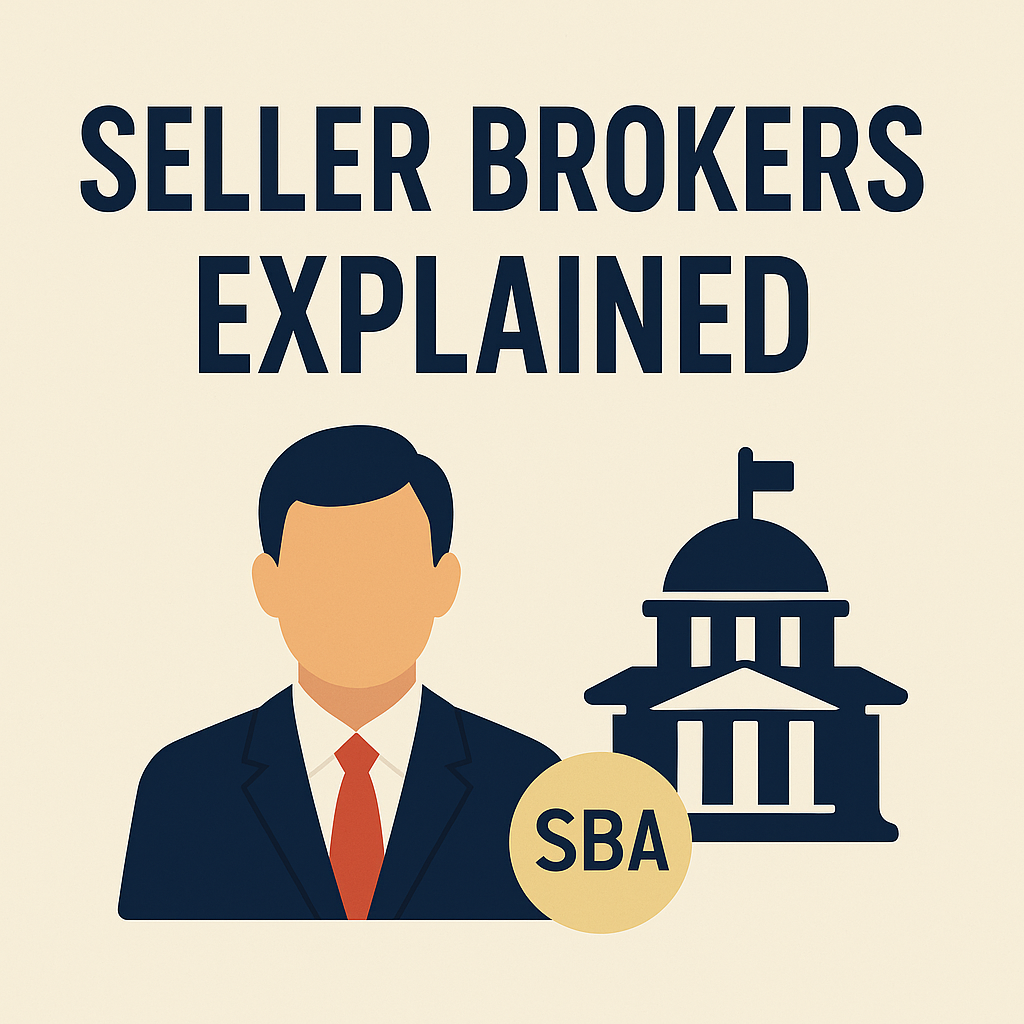
Beware of Step-Transactions
- General
- October 24, 2025
When you buy a small or mid-sized business, you’ll quickly learn there are two fundamental ways a sale can be structured for tax purposes: an asset sale or a stock (equity) sale.
The difference sounds technical, but it determines who pays what tax, who inherits which liabilities, and how much depreciation the buyer can claim later.
Because of that, some sellers—and occasionally their advisors—try to get clever with a structure known as a “drop-down” or “step-transaction.” On paper it can look like a stock sale, but in the eyes of the IRS it’s really an asset sale wearing a mask.
This article explains how the trick works, why the IRS routinely collapses it, and what you—as a buyer—should watch for so you don’t end up with an unexpected tax bill or a deal that unravels under audit.
Asset Sales vs. Stock Sales
In an asset sale, the buyer purchases specific assets of the business: equipment, customer lists, intellectual property, and so on.
- Buyer advantage: You receive a step-up in basis—meaning you can depreciate the assets from their current market value, not the seller’s old cost.
- Seller disadvantage: The seller recognizes taxable gain on each asset sold.
In a stock sale (or LLC membership-interest sale), the buyer purchases ownership of the entity itself.
- Seller advantage: Usually taxed at long-term capital-gain rates.
- Buyer disadvantage: You get no step-up in basis; you inherit the entity’s tax history and its potential skeletons.
Naturally, buyers love asset sales and sellers love stock sales. The friction between those two preferences drives much of M&A tax structuring.
The “Drop-Down” Temptation
Sometimes, a seller proposes what seems like a neat compromise:
“We’ll move the assets you want into a new subsidiary, then you can just buy the stock of that subsidiary instead of buying the assets directly.”
That maneuver—called a drop-down or carve-out—means the seller’s main company transfers selected assets into a brand-new shell entity. The buyer then purchases the shell’s stock (or LLC interests) rather than the individual assets.
At first glance, it looks like a stock sale: you’re buying equity in a company. But if the drop-down was created solely to facilitate the sale, tax law sees straight through it.
The IRS’s View: Form vs. Substance
U.S. tax law doesn’t just care what your contracts say; it cares what really happened.
If two or more steps are prearranged and serve no independent business purpose apart from completing a sale, the IRS treats them as a single step.
That doctrine is called the step-transaction doctrine.
It applies across all entity types—corporations, S-corps, and partnerships alike.
So if a seller forms a new company, transfers the target assets into it, and immediately sells that new company’s equity to you, the IRS views it as:
“You bought the assets directly.”
The shiny new shell disappears for tax purposes. The result is a taxable asset sale, regardless of how it’s papered.
Why Sellers Try It
Sellers usually pursue the drop-down to obtain capital-gain treatment on what is really an asset sale.
Under normal rules, selling assets can trigger “ordinary income” on things like depreciation recapture.
Selling stock, by contrast, often qualifies for favorable long-term capital-gain rates.
The temptation, then, is to convert an asset sale into a stock sale by inserting a quick entity transfer in between.
But the IRS has seen this movie a thousand times—and the ending is always the same.
The Key Precedents
Two classic authorities illustrate how the government handles these setups:
Kimbell-Diamond Milling Co. v. Commissioner (1950): The buyer purchased stock of a corporation and immediately liquidated it. The court ruled the transaction was really a purchase of assets—not stock—because that was the end result.
Revenue Ruling 2001-46: The seller contributed assets to a newly formed subsidiary and, as part of the same plan, sold the subsidiary’s stock. The IRS collapsed the steps and treated it as a direct asset sale.
The takeaway: when the drop-down and the sale are parts of one integrated plan, the IRS ignores the middle entity.
The Time and Purpose Tests
Tax law doesn’t forbid drop-downs entirely—it forbids sham ones.
Courts ask two main questions:
- Time: Did any meaningful period pass between the asset transfer and the sale?
- If it all happens within days or weeks, expect the IRS to collapse it.
- Business Purpose: Did the new entity have a legitimate reason to exist besides the sale?
- For example, separating a risky line of business, preparing for investors, or isolating liabilities.
If the seller can demonstrate both—time and purpose—the structure may be respected.
But in practice, when the drop-down exists only to dress up an imminent sale, it fails both tests.
What This Means for Buyers
From a buyer’s perspective, a disguised asset sale can cause serious headaches:
- Unexpected Tax Treatment: You might think you’re buying stock (no step-up), but the IRS could recharacterize it as an asset purchase—affecting your depreciation schedules and the seller’s tax liabilities.
- Contract Mismatch: Your purchase agreement, indemnities, and representations may no longer align with how the transaction is taxed.
- Potential Withholding or Reporting Issues: If the deal is reclassified, reporting obligations (like Form 8594 allocations) may suddenly apply.
The safest approach: understand what you’re really buying. Ask the seller and their advisors exactly when and why any new entity was formed.
If the assets were dropped into it right before the sale, treat the deal as an asset purchase and price it accordingly.
Why the Reverse Isn’t Allowed
Buyers often ask, “If the IRS can treat a stock sale as an asset sale under §338(h)(10), why can’t we go the other way?”
Simple: the Code allows elections that increase tax recognition (stock → asset) but not ones that decrease it (asset → stock).
Congress is happy to let you accelerate income, but not to hide it behind formality.
You can’t re-label an asset sale as a stock sale just to reduce tax.
Practical Red Flags
When you’re reviewing a deal, be cautious if you see:
- A newly formed subsidiary created just before closing.
- Assets transferred into that entity within weeks of the sale.
- No employees, operations, or separate books in the new entity.
- The seller insisting the transaction must be treated as a “stock sale” for tax purposes even though you’re effectively buying equipment, contracts, and goodwill.
Those are textbook signs of a step-transaction in disguise.
How to Protect Yourself
- Ask early questions. When was the entity formed? What’s its operating history?
- Get the tax reps in writing. Your purchase agreement should state clearly whether it’s an asset or equity sale for tax purposes and who bears the risk of recharacterization.
- Request copies of prior tax returns or formation documents for the subsidiary.
- Consult your CPA or tax counsel before closing. The cost of advice is small compared to the cost of an IRS challenge later.
The Bottom Line
If you’re buying a business and the seller proposes a quick “drop-down,” remember:
You can’t convert an asset sale into a stock sale just by inserting a new entity.
The IRS doesn’t reward cosmetic structuring. It looks through the form to the substance—and if the substance is an asset sale, that’s how it will be taxed.
Understanding this early protects you from surprises, aligns expectations between buyer and seller, and helps you price the deal realistically.
In Summary
| Step | Legitimate? | Tax Result |
|---|---|---|
| Assets moved to new subsidiary for long-term business reasons | ✅ Usually respected | §351 tax-free transfer possible |
| Assets dropped into shell days before sale | ❌ Collapsed under step-transaction doctrine | Treated as asset sale |
Every deal has a tax story behind it. Make sure the story matches the reality.
If a seller tells you, “Don’t worry, we just formed a new company so you can buy the stock,” that’s your cue to slow down, ask questions, and bring in professional tax counsel.
When it comes to step-transactions, the rule is simple: substance beats form every time.
(c) 2025 Prencipe International / M&A Advisory Specialists — For educational purposes only; not legal or tax advice.





